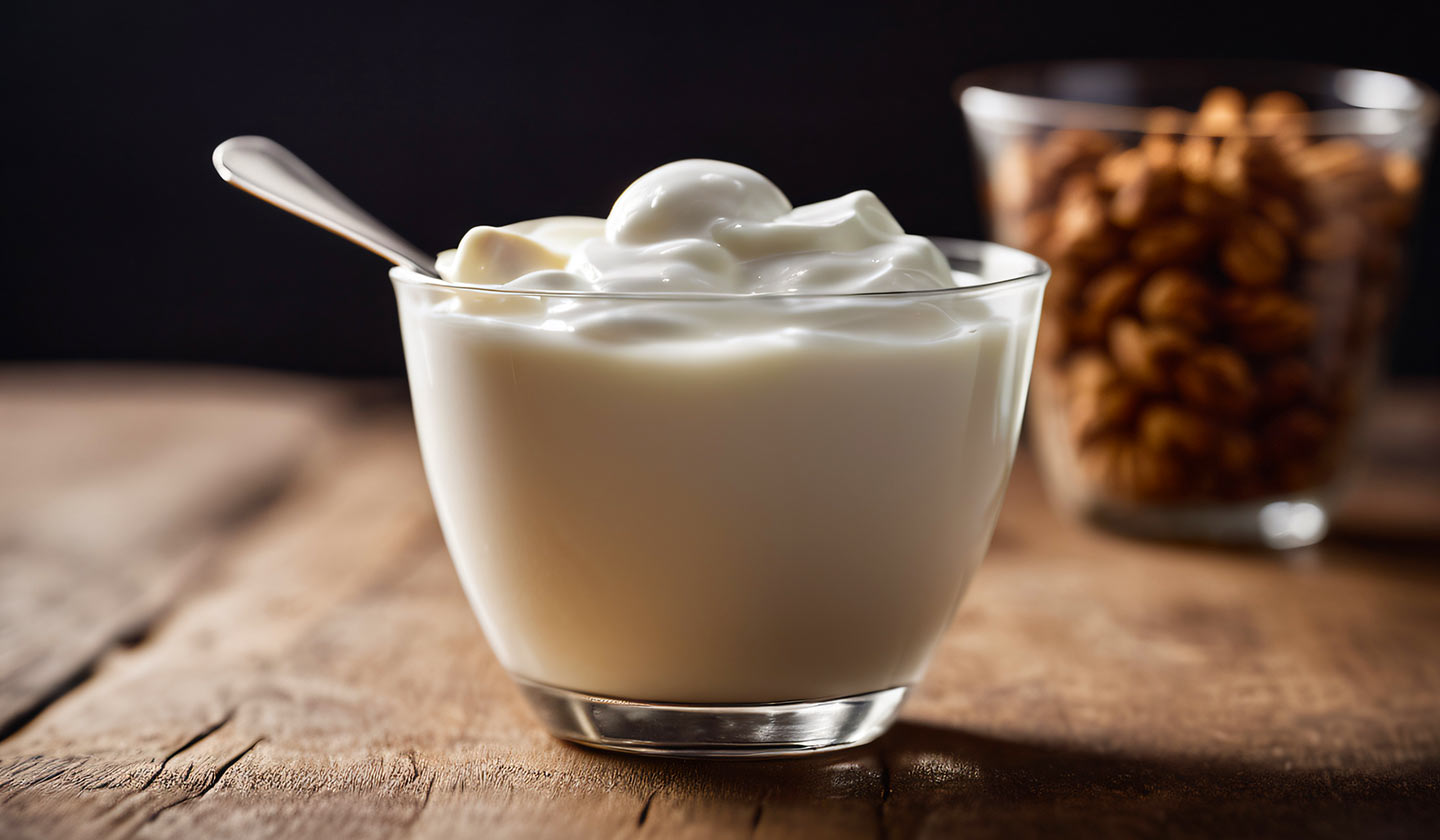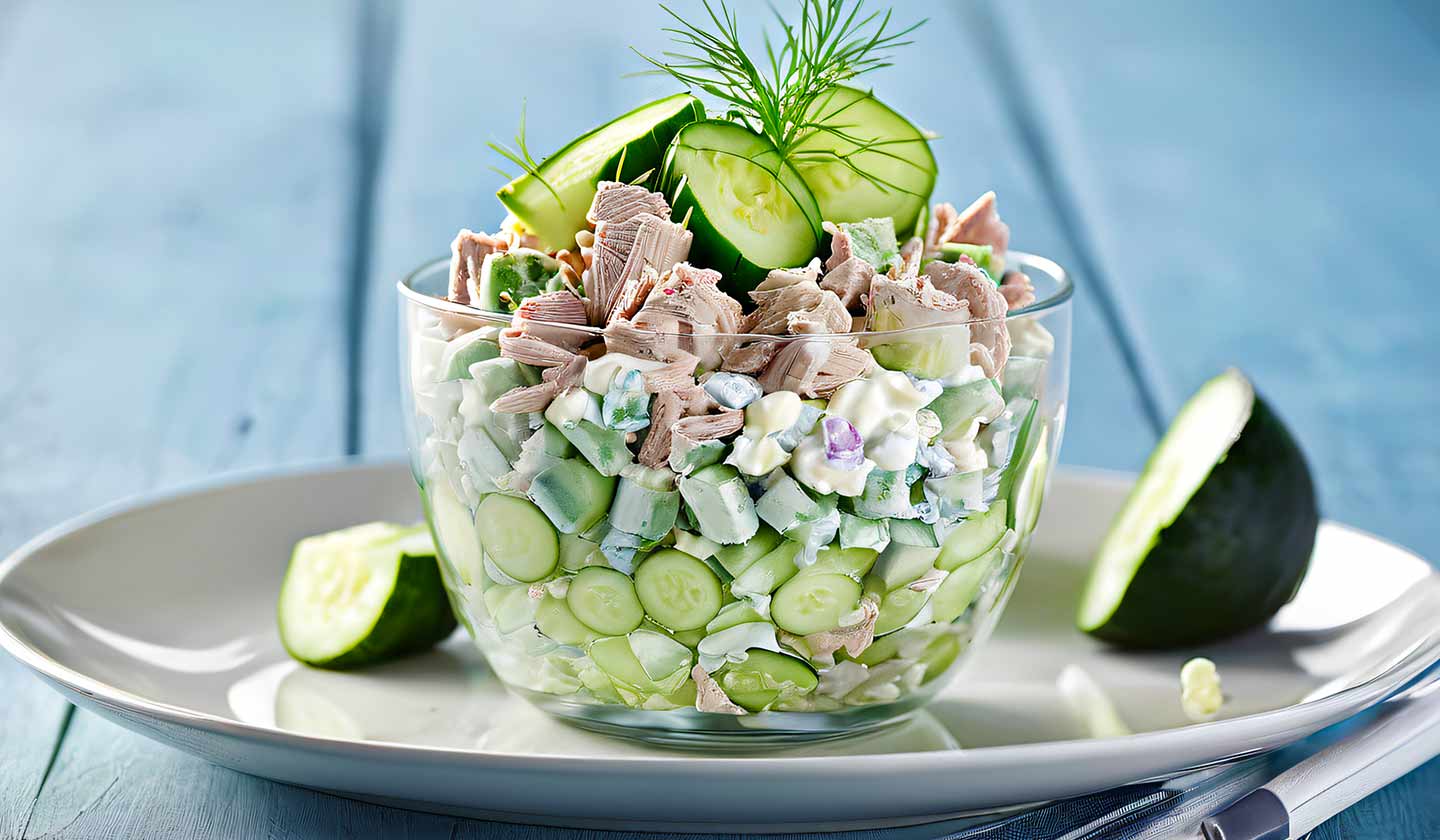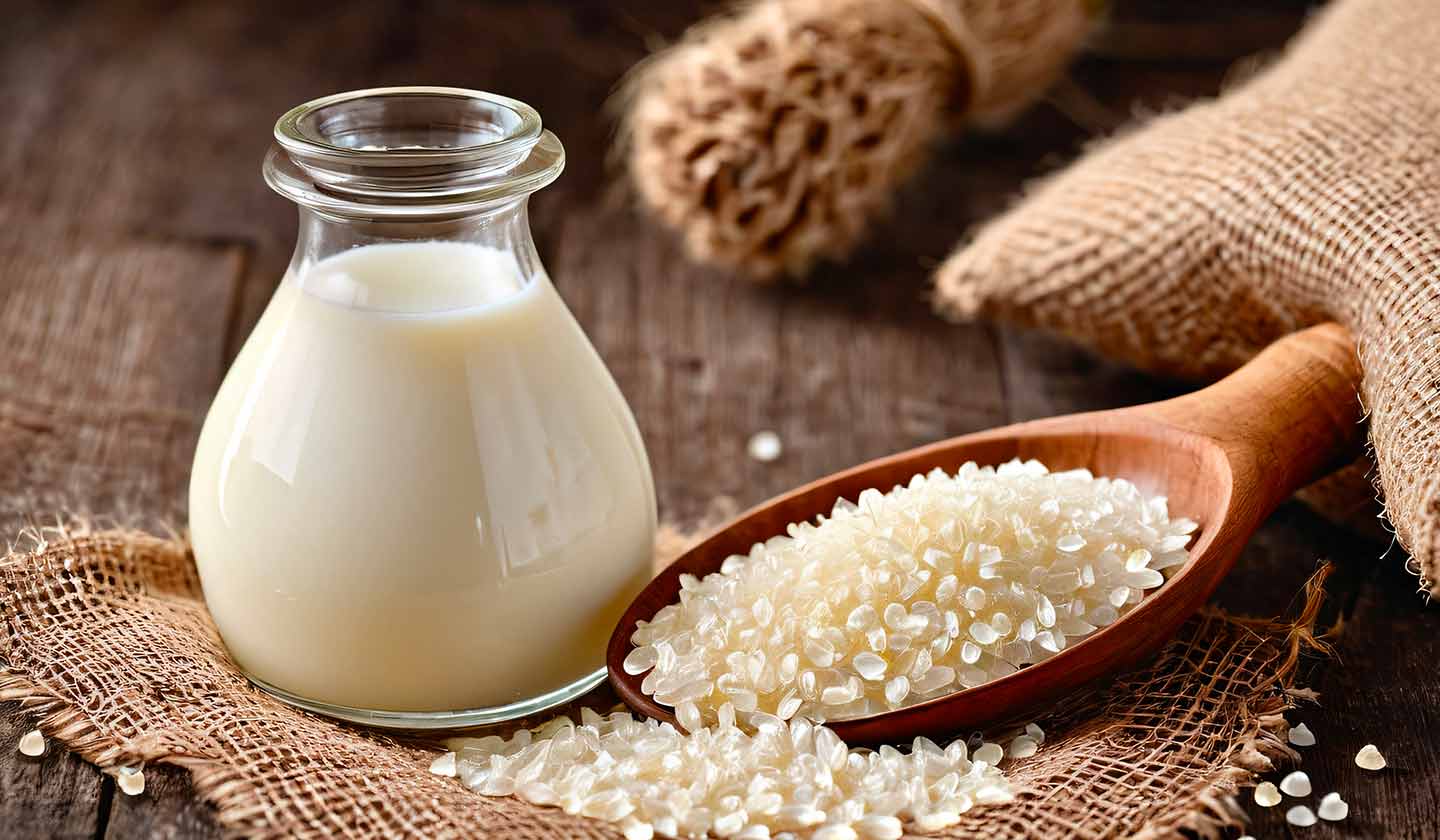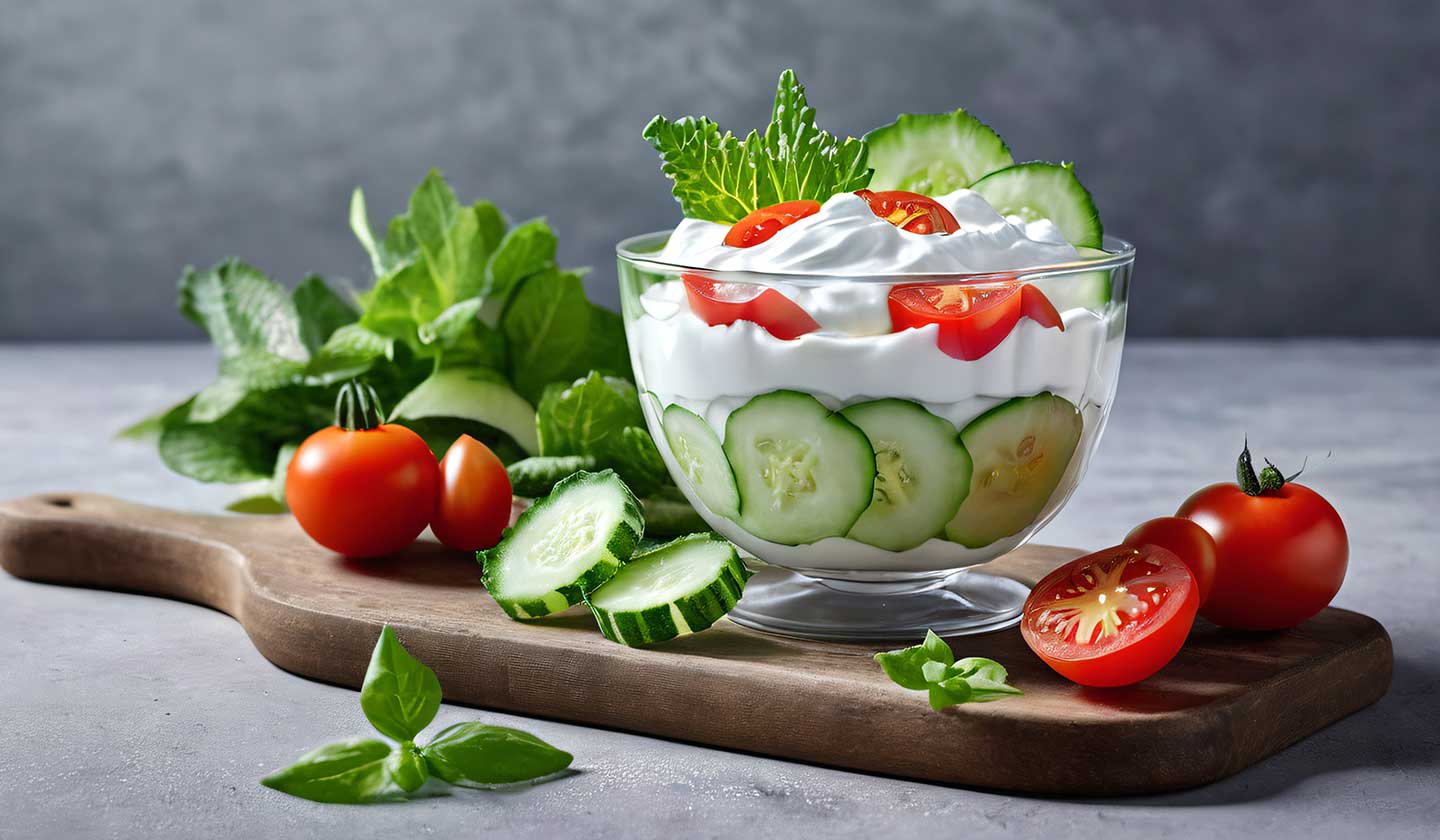Food
The nutritional power of yoghurt and fermented milks

Yoghurts and fermented milks are foods that have been consumed for thousands of years and are increasingly appreciated for their nutritional properties and health benefits.
They are obtained by fermenting milk, which is carried out by lactic acid bacteria such as Lactobacillus bulgaricus and Streptococcus thermophilus. Fermentation changes the composition of milk, making it more acidic and easier to digest.

Nutritional Value
Yoghurts and fermented milks are foods with a high nutritional density, i.e. they contain a large amount of nutrients in a small amount of calories. They are a good source of protein, calcium, phosphorus, B vitamins and vitamin A.

Proteins
Yoghurts and fermented milks are a good source of proteins of high biological value because they contain all the essential amino acids. Proteins are essential for growth and development, for maintaining muscle mass and for the proper functioning of various organs and systems in the body.
Calcium
These foods are an excellent source of calcium, an essential mineral for healthy bones and teeth. Calcium is also important for nerve transmission, muscle contraction and blood clotting.
Phosphorus
Yoghurts and fermented milks are also a good source of phosphorus, another essential mineral for healthy bones and teeth. Phosphorus also participates in energy metabolism, protein synthesis and muscle function.
B-complex vitamins
Yoghurts and fermented milks are a good source of B vitamins, which play an essential role in energy metabolism, neurological function and skin and hair health.
Vitamin A
Yoghurts and fermented milks are also a good source of vitamin A, an essential vitamin for vision, the immune system and reproduction.
Health benefits
Regular consumption of yoghurt and fermented milks is associated with a number of health benefits, including:
- Improved bone health
- Reduced risk of cardiovascular disease
- Reduced risk of type 2 diabetes mellitus
- Reduced risk of obesity
- Strengthening the immune system

How to choose
When choosing yoghurts and fermented milks, it's important to opt for products that contain live lactic acid bacteria. These bacteria are essential for the health benefits associated with eating these foods.
It's also important to choose products with a low sugar and fat content. Natural yoghurts and plain fermented milks are the best options.

How to consume
Yoghurts and fermented milks can be eaten on their own, as a dessert or as a snack. They can also be used to prepare recipes such as fruit salads, smoothies and pancakes.

Conclusion
Yoghurts and fermented milks are nutritious and healthy foods that can form part of a balanced diet. They are a great option for all ages, from children to the elderly.
Recipes

Greek Yoghurt with Fruit and Granola
Ingredients:
- 1 cup (250 ml) natural Greek yoghurt
- 1/2 cup (100 g) chopped fresh fruit
- 1/4 cup (30 g) granola
Preparation:
- Mix the yoghurt, fruit and granola in a bowl.
- Serve immediately.

Tuna salad with yoghurt and cucumber
Ingredients:
- 1 tin of canned tuna in olive oil, drained
- 1/2 cup (120 ml) natural yoghurt
- 1 small cucumber, chopped
- 1 chopped green onion
- Salt and pepper to taste
Preparation:
- Mix the tuna, yoghurt, cucumber, spring onions, salt and pepper in a bowl.
- Serve immediately.

Yoghurt Dressing for Salads
Ingredients:
- 1/2 cup (120 ml) natural yoghurt
- 1/4 cup (60 ml) olive oil
- 2 tablespoons (30 ml) lemon juice
- 1 tablespoon (15 g) Dijon mustard
- 1/2 teaspoon (2.5 g) salt
- 1/4 teaspoon (1.25 g) pepper
Preparation:
- Blend all the ingredients in a blender until smooth.
- Serve immediately or store in the fridge for up to 3 days.

Kefir
Kefir is a fermented drink that originated in the Caucasus. It is made with milk, which is fermented by a group of bacteria and yeasts called "kefir grains".
Kefir grains are a gelatinous mass containing the bacteria and yeasts responsible for fermentation. They can be bought in specialised shops or from people who make kefir at home.
The fermentation of kefir transforms milk into a drink with a tart, creamy flavour. Kefir is also rich in probiotics, bacteria that are beneficial to health.
The probiotics present in kefir can help improve digestion, strengthen the immune system and prevent disease.
In addition, kefir is a good source of protein, calcium and other nutrients.
How to make kefir?
Ingredients:
- 1 tablespoon kefir grains
- 500 ml milk
- 1 glass jar
- 1 gauze or thin cloth
- 1 elastic band
Preparation:
- Rinse the kefir grains thoroughly under running water.
- Place the kefir grains in the glass jar.
- Add the milk to the jar.
- Cover the jar with gauze or a thin cloth and secure with an elastic band.
- Leave the kefir to ferment at room temperature for 24-48 hours.
- After fermenting, strain the kefir and store it in the fridge.
Kefir grains can be reused several times. To do this, simply add the kefir grains to a new batch of milk and repeat the process.

Tips for making kefir
- Use whole or semi-skimmed milk.
- If you use skimmed milk, the kefir may become more acidic.
- You can use milk from any animal, but cow's milk is the most common.
- You can also use vegetable milk, such as almond milk, soya milk or coconut milk.
- The fermentation time can vary according to the ambient temperature. If it's warmer, the kefir will ferment faster.
- If you want a more acidic kefir, let it ferment for longer.

How to take kefir
Kefir can be eaten straight, with fruit, cereal or granola. It can also be used as an ingredient in recipes such as salads, soups or sauces.
The World Health Organisation (WHO) recommends that adults consume at least 250 grams of milk or dairy products a day. Kefir is a great option for meeting this recommendation.
How to store kefir
Kefir can be stored in the fridge for up to 7 days. If you don't consume all the kefir, you can freeze it for up to 3 months.
Ana Neto
(Pharmaceutical)
Também lhe poderá interessar
Supplements
Attention! Beware of supplementation in sport
Supplements






